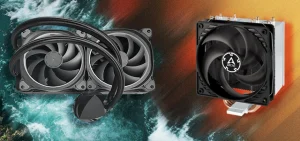
Increased computing power and performance requirements, coupled with technological advances such as artificial intelligence (AI), Internet of Things (IoT), and machine learning (ML), are causing temperatures within data center infrastructure and IT equipment to rise. More computing means more power, more power means more heat, and more heat requires more cooling, which in turn consumes more power, and the cycle repeats.
Immersion cooling is a cooling technique in which computer hardware is immersed in a dielectric fluid, usually a non-conductive liquid such as mineral oil or a dielectric fluid such as 3M Novec. This approach has gained its popularity in the cryptocurrency mining industry because it is efficient at cooling high-performance computer hardware, such as the GPUs (graphics processing units) used to mine cryptocurrencies.
Immersion cooling is the hot new thing in computer cooling, and it has several critical benefits that are winning more and more converts. It can deal with higher power densities, run cleanly and quietly, and cost far less than traditional air cooling. All of these advantages have additional value for high-performance computing that pushes processors and budgets to their limits.

Benefits Of Immersion Cooling
One of the main advantages of immersion cooling is its capability to efficiently dissipate heat from the hardware. The liquid used in immersion cooling has a high thermal conductivity, which allows it to efficiently transfer heat from the hardware to its surroundings. This is in contrast to traditional air cooling approaches, which rely on fans and heat sinks to dissipate heat and can be less effective at cooling high-performance hardware.
What’s more, another advantage of immersion cooling is its capability to reduce noise. Since it does not require the use of fans to cool hardware, immersion cooling systems are nearly noiseless, which makes them perfect for use where noise levels need to be kept to a minimum.

Challenge Of Immersion Cooling
One of the primary challenges of immersion cooling is the potential risk of hardware failure due to liquid leakage. To mitigate this risk, it is essential to use high-quality hardware and to ensure that it is properly sealed prior to immersion in the liquid. It is also essential to check the hardware and fluid regularly to ensure that there are no leaks or other issues that might endanger the system.
In conclusion, immersion cooling is an efficient cooling method that is increasingly being used in the cryptocurrency mining industry. It efficiently dissipates heat from high-performance hardware and is virtually silent, although it does carry some risk of hardware failure due to liquid leaks. These risks can be effectively mitigated by properly sealing and maintaining hardware and fluids and enjoying the benefits of immersion cooling.
Liquid immersion cooling for data centers has made great strides over the last decade. The single-phase version of this technology now offers winning efficiency, price, and reliability. It enables HPC, AI, blockchain, and the other technologies that define tomorrow’s computing landscape.
For these reasons alone, it’s clear that liquid immersion cooling is the future of high-performance computing – and also of data centers in general. Ready to take the plunge? Let BoxTechy help!
If you are interested in the boxtechy immersion cooling system, please contact us.



